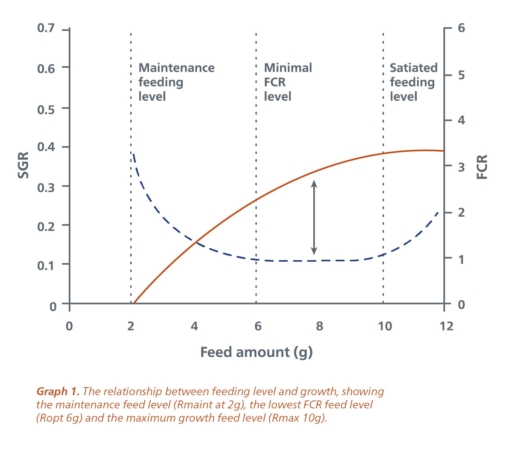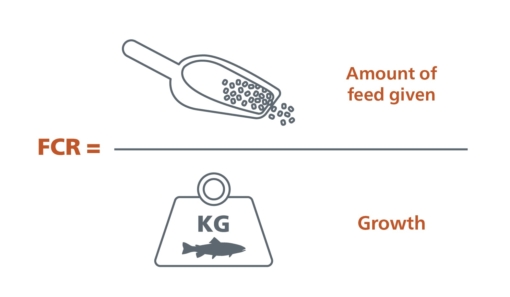
The relationship between feeding level and growth
Besides using a first-class RAS feed, a proper feeding strategy is necessary for the best results.

Minimise FCR or maximise growth
Trout eat to meet their energy requirement, provided oxygen levels, and other water quality parameters are not limiting. The trout feeding tables supplied by Alltech Coppens are based on the energy level of the feed, and the amount trout can convert at a given temperature. The first grower feed table aims at reaching the lowest possible FCR, while the other targets near-maximum growth. The last feeding table is slightly conservative, to prevent overfeeding. The farm manager has two choices:minimise FCR or maximise growth. (See graph 1)
Optimum feed rate

The lowest FCR is reached at what is typically called the optimum feed rate (Ropt). At that level, the highest production per kg of feed given is reached. When the feed rate is increased above this level, trout grow faster, but the FCR also creeps up. At a certain point, more feed will not result in further growth. This is when the maximum growth rate (Gmax) is reached and is termed the maximum feed rate (Rmax). The feed ingested above this level is not as well-digested and leads to excessive fat accumulation that no longer results in weight increase. Also, the FCR quickly deteriorates, and feed spilling occurs.
